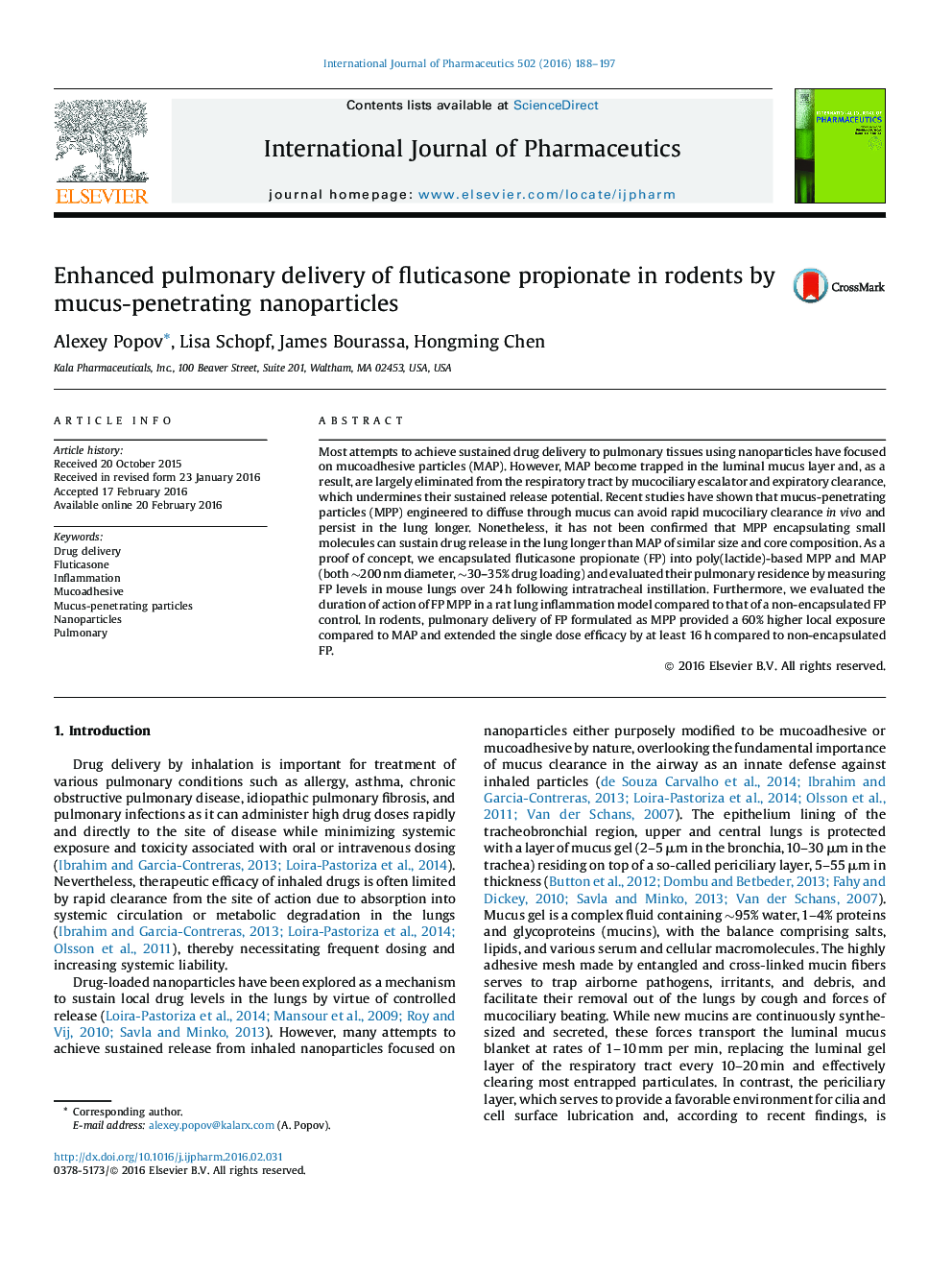| Article ID | Journal | Published Year | Pages | File Type |
|---|---|---|---|---|
| 2501065 | International Journal of Pharmaceutics | 2016 | 10 Pages |
Most attempts to achieve sustained drug delivery to pulmonary tissues using nanoparticles have focused on mucoadhesive particles (MAP). However, MAP become trapped in the luminal mucus layer and, as a result, are largely eliminated from the respiratory tract by mucociliary escalator and expiratory clearance, which undermines their sustained release potential. Recent studies have shown that mucus-penetrating particles (MPP) engineered to diffuse through mucus can avoid rapid mucociliary clearance in vivo and persist in the lung longer. Nonetheless, it has not been confirmed that MPP encapsulating small molecules can sustain drug release in the lung longer than MAP of similar size and core composition. As a proof of concept, we encapsulated fluticasone propionate (FP) into poly(lactide)-based MPP and MAP (both ∼200 nm diameter, ∼30–35% drug loading) and evaluated their pulmonary residence by measuring FP levels in mouse lungs over 24 h following intratracheal instillation. Furthermore, we evaluated the duration of action of FP MPP in a rat lung inflammation model compared to that of a non-encapsulated FP control. In rodents, pulmonary delivery of FP formulated as MPP provided a 60% higher local exposure compared to MAP and extended the single dose efficacy by at least 16 h compared to non-encapsulated FP.
Graphical abstractFigure optionsDownload full-size imageDownload high-quality image (238 K)Download as PowerPoint slide
